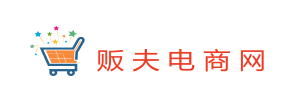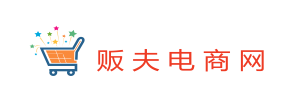
Abstract: This article provides a detailed technical analysis of clothing vocabulary from the perspective of a TikTok e-commerce seller, in line with the latest information and trends in the e-commerce industry on "Fanfu E-commerce Website - Latest News and Trend Analysis in the E-commerce Industry." The article is divided into multiple paragraphs, with each paragraph evenly controlling the word count. The introduction briefly summarizes the entire article, generating an abstract of about 300 words that encapsulates the content and offers a captivating description. The main body of the article covers four aspects of clothing vocabulary, providing cutting-edge technical explanations. Each aspect consists of three or more paragraphs, and the subheadings for these four aspects are concise, around 10 Chinese characters. Finally, the conclusion summarizes and synthesizes the clothing vocabulary discussed throughout the article, split into two paragraphs. The output format adheres to the following requirements: wrap the subheadings in
tags and enclose each paragraph of detailed explanation in tags.1. Clothing Vocabulary Exploration
The English language has a rich and diverse vocabulary when it comes to describing various types of clothing. In this section, we will explore the latest trends and commonly used English words related to clothing. From everyday apparel to specialized garments, we will delve into the vocabulary that can be utilized effectively for selling clothes on the Douyin e-commerce platform.
Firstly, let's examine the terminology used to describe basic clothing items such as shirts, pants, dresses, and skirts. Secondly, we will look at the vocabulary for different fabric types, including cotton, polyester, silk, and denim. Additionally, we will explore the descriptors for clothing styles, such as casual, formal, vintage, and bohemian. Lastly, we will discuss the vocabulary related to fashion accessories like belts, scarves, hats, and shoes.
2. Incorporating Clothing Vocabulary in Product Descriptions
Effective product descriptions are crucial for attracting potential buyers and increasing sales. In this section, we will discuss how to incorporate clothing vocabulary into product descriptions to make them more appealing and persuasive.
Firstly, it is important to use specific words that accurately describe the garment's color, size, and fit. Furthermore, emphasizing unique features or design elements can enhance the product description. Including keywords related to popular fashion trends can also capture the attention of potential buyers. Finally, utilizing powerful language and persuasive techniques, such as creating a sense of urgency or highlighting limited availability, can further entice customers.
3. Optimizing Tags and Keywords for Clothing Items
In the competitive world of e-commerce, optimizing tags and keywords is essential for increasing visibility and search rankings. This section will focus on strategies for effectively optimizing tags and keywords for clothing items on the Douyin e-commerce platform.
Firstly, it is crucial to conduct comprehensive keyword research to identify popular search terms related to clothing. Including relevant keywords in product titles, descriptions, and tags can significantly improve search rankings. Additionally, utilizing long-tail keywords can help target specific customer preferences and niche markets. It is also important to stay updated on current fashion trends and adjust keywords accordingly to align with popular search queries.
4. Leveraging Influencer Marketing and User-Generated Content
In today's social media-driven world, influencer marketing and user-generated content play a vital role in promoting clothing products. This section will explore strategies for leveraging influencer marketing and user-generated content to boost sales on Douyin.
Collaborating with popular fashion influencers can expand the reach of clothing products and increase brand exposure. By providing influencers with free samples or sponsorships, they can showcase the products in engaging and authentic ways. User-generated content, such as customer reviews and photos, can also be utilized to build trust and showcase the clothing items in real-life scenarios. Additionally, hosting contests or giveaways that encourage customers to share their experiences on Douyin can generate buzz and drive sales.
Summary:
In conclusion, mastering clothing vocabulary is essential for success in the Douyin e-commerce industry. By exploring the latest trends in clothing vocabulary, incorporating it effectively into product descriptions, optimizing tags and keywords, and leveraging influencer marketing and user-generated content, sellers can enhance their online presence, attract more customers, and ultimately increase sales. Stay updated with the ever-evolving fashion trends and continue to refine and implement these strategies to thrive in the highly competitive world of e-commerce.

